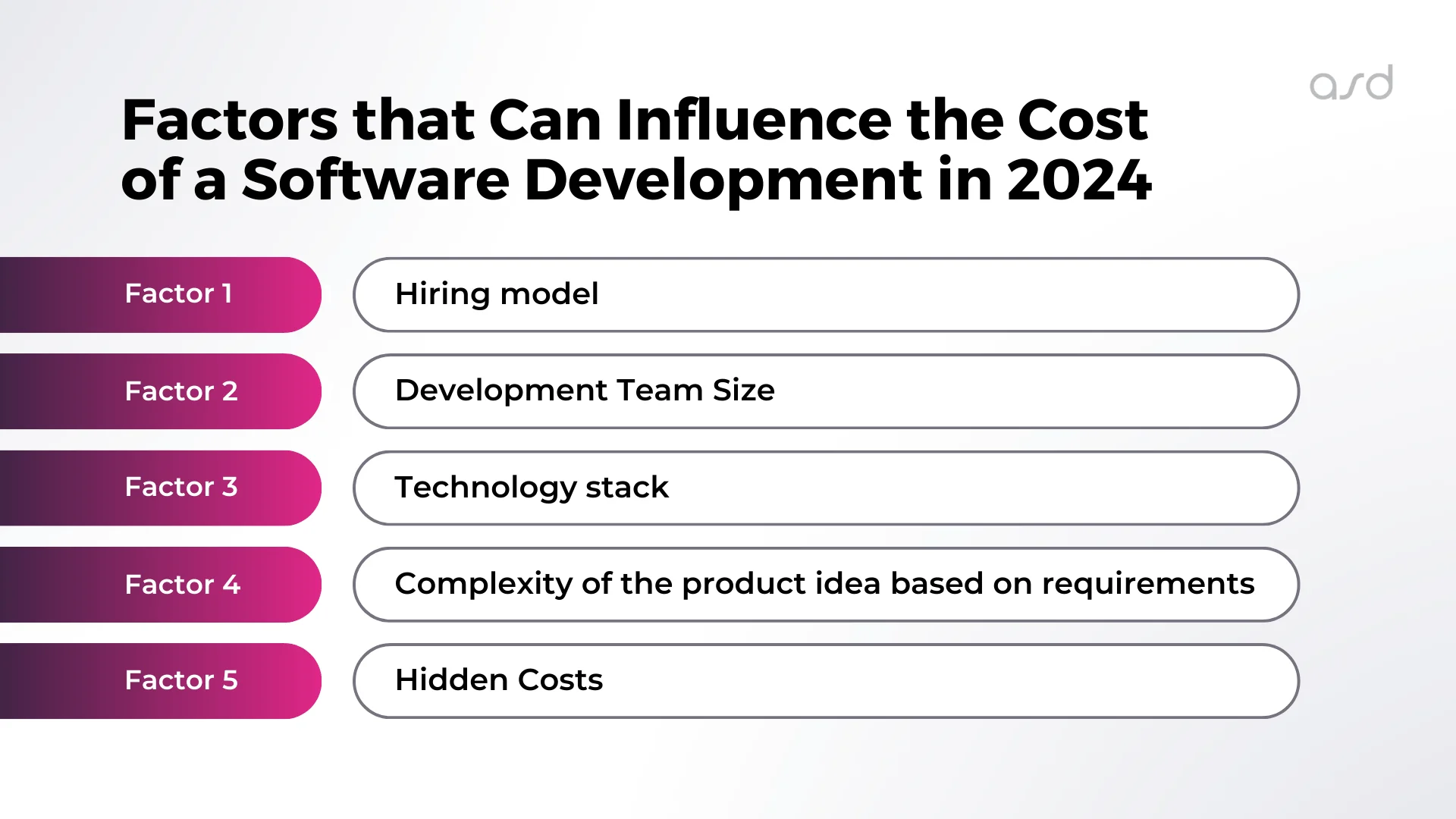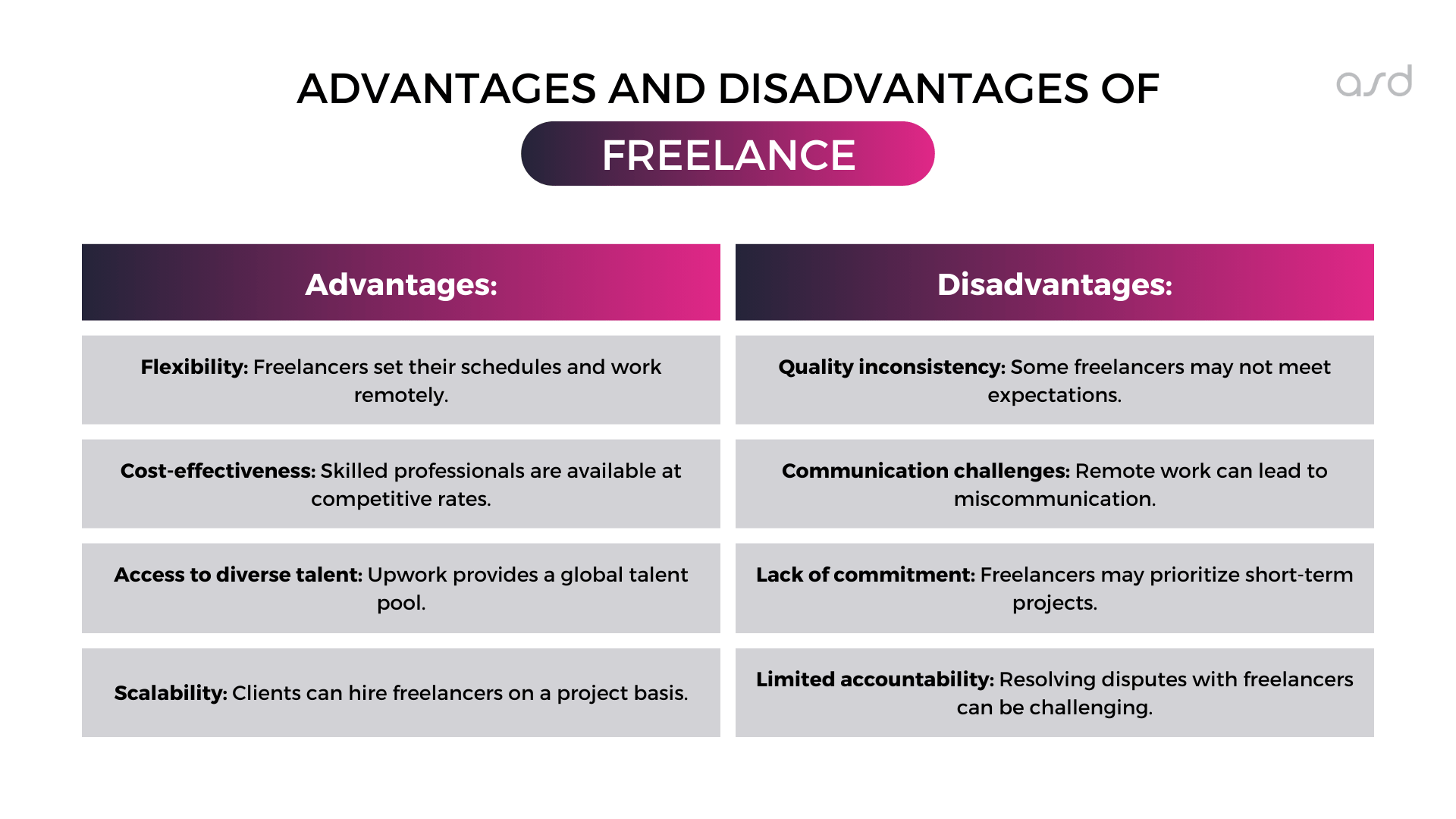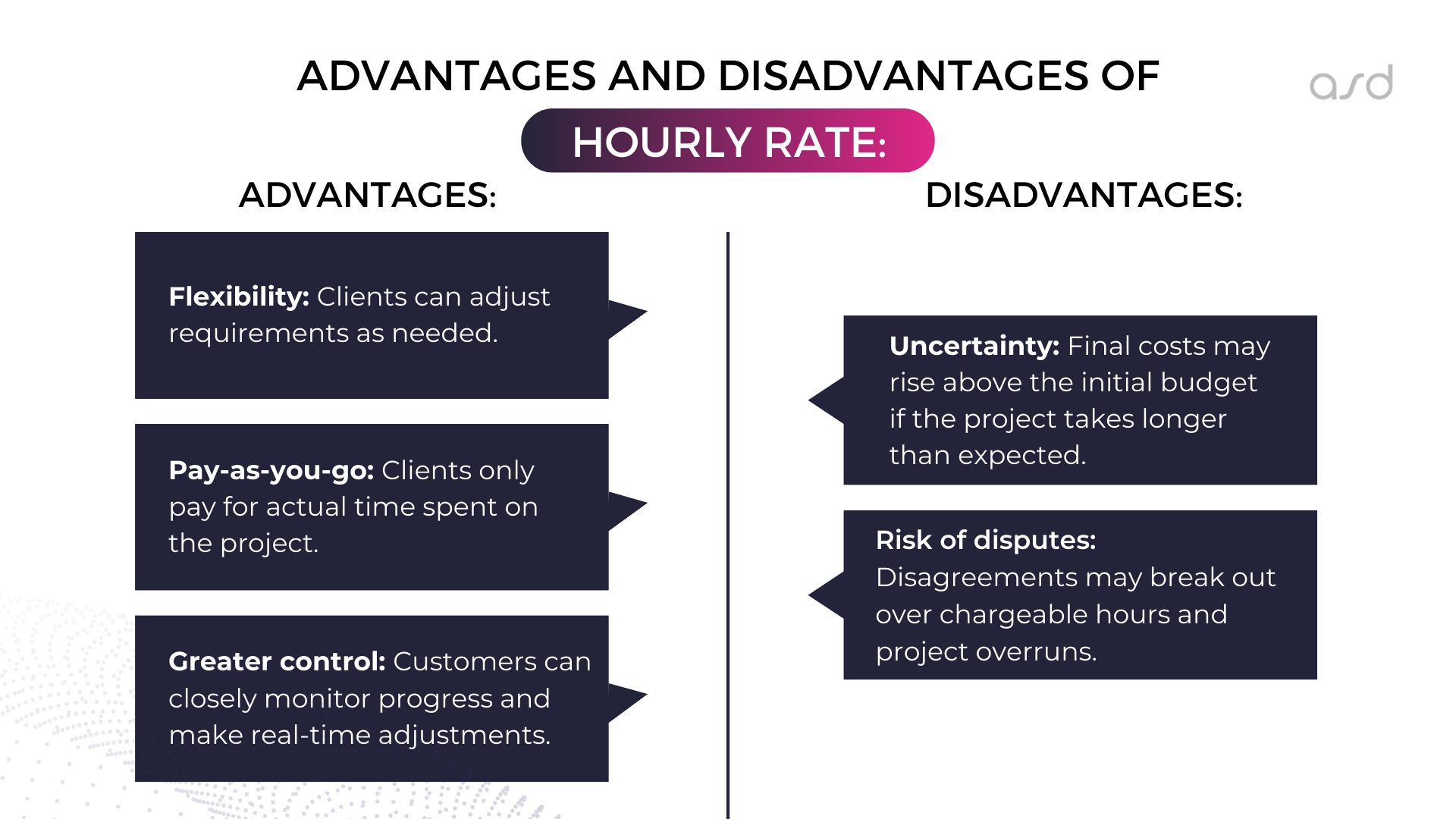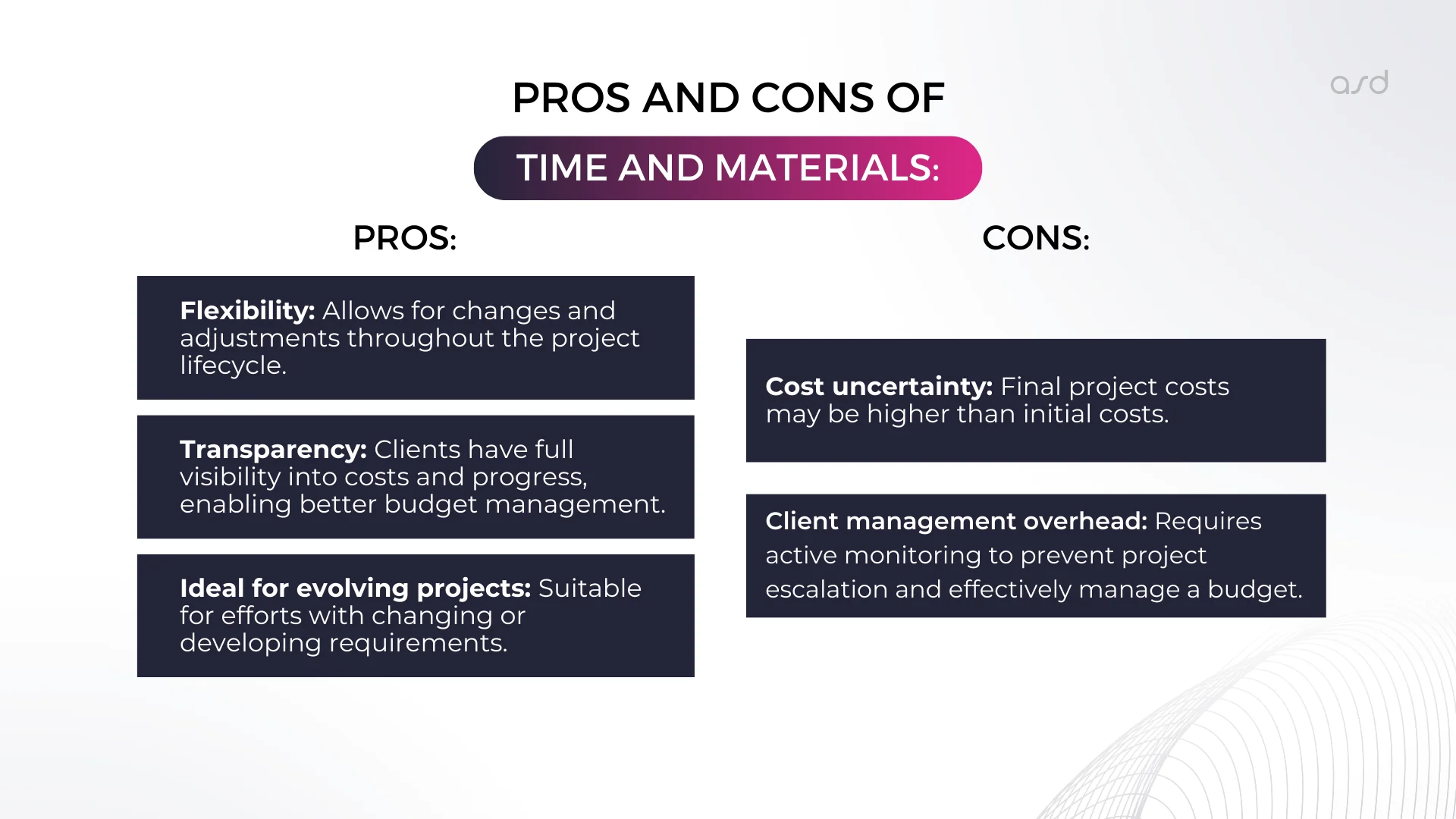Table of Content
- Factor 1: Hiring model
- Factor 2: Development Team Size
- Factor 3: Technology stack
- Factor 4: Complexity of the product idea based on requirements
- Factor 5: Hidden Costs
- Conclusion
Develop Your Idea into Powerful Software
Book a callIf you have an incredible product idea and are wondering how much it will cost to develop, or you already work on some product development but want to expand its functionality and wonder how much that will cost; or you are even thinking about switching to another contractor and consider different options and again wonder how much will that cost. Either way, here you’ll find answers to the one main question — how much does the software development cost for my request in 2024?

Factor 1: Hiring model
- In-house: Consider employee salaries (ranging from £40,000 to £80,000 or USD 48,000 – 96,000 for UK developers, and £50,000 – £65,000 or USD 60,000 – 78,000 for project managers and QA), benefits, recruitment fees, office space (rent, utilities, maintenance), equipment (hardware, software licenses), and training expenses. A minimum in-house team with these averages clocks in at a hefty £200,000 – £300,000 (USD 240,000 – 360,000) per month. Remember, these are just estimations, and actual costs can vary depending on your location, team size, and expertise requirements.
- Outsourcing Cost Comparison: Increase efficiency and reduce costs with customized collaboration options. Choose from fixed-price models, hourly rates, managed teams, or time-and-materials models to fit your project needs and budget.
Deciding between in-house vs outsourcing for your software needs? Check out our latest article to discover which option is right for you.
As we zoom in, we see that Ukraine stands out as a budget-friendly option with rates starting at $35-50/hour. In contrast, rates in Western Europe range from $50-100/hour, and in the US, according to Glassdoor, they can range from $121k-208/year! This provides a substantial cost advantage, with the minimum cost for an outsourced team in Ukraine starting at around $6,000 – $10,000 per month. However, don’t let cost be the only factor in your decision. Consider the team’s experience, technical expertise, and communication skills to ensure a long-term partnership.
Discover the numerous benefits of outsourcing software development to Ukraine
Examples of model collaborations:
1. Fixed-rate:
Advantages:
- Predictability: Clients know up front what they will pay for the entire project.
- Reduced risk: The risk of cost increases usually falls on the vendor.
- Clear expectations: Clearly defined project terms and results.
Cons:
- Limited flexibility: Changes in project size may result in additional costs.
- Potentially higher upfront costs: Vendors may include a performance fee in the fixed price to reduce risk.

2. Hourly rate:
Advantages:
- Flexibility: Clients can adjust requirements as needed.
- Pay-as-you-go: Clients only pay for actual time spent on the project.
- Greater control: Customers can closely monitor progress and make real-time adjustments.
Cons:
- Uncertainty: Final costs may rise above the initial budget if the project takes longer than expected.
- Risk of disputes: Disagreements may break out over chargeable hours and project overruns.
3. Dedicated Team:
Pros:
- Exclusive focus: Team members work exclusively on your project, providing focused attention and expertise.
- Seamless collaboration: Strong team and communication promote efficient workflow.
- Long-term partnership: Allows for ongoing support and maintenance beyond project close.
Cons:
- Higher cost: Specialized teams typically charge higher rates than individual contractors.
- Dependency: Relying on a single team can be challenging in the event of unexpected issues or staff changes.
4. Time and Materials:
Pros:
- Flexibility: Allows for changes and adjustments throughout the project lifecycle.
- Transparency: Clients have full visibility into costs and progress, enabling better budget management.
- Ideal for evolving projects: Suitable for efforts with changing or developing requirements.
Cons:
- Cost uncertainty: Final project costs may be higher than initial costs.
- Client management overhead: Requires active monitoring to prevent project escalation and effectively manage a budget.
5. Freelance:
Freelancing through platforms is popular, they offer access to a wide range of skilled professionals categorized into tiers based on experience. According to Upwork, entry-level freelancers charge $15 to $30 per hour, while experts may charge $100 to $200 or more.
Advantages:
- Flexibility: Freelancers set their schedules and work remotely.
- Cost-effectiveness: Skilled professionals are available at competitive rates.
- Access to diverse talent: Upwork provides a global talent pool.
- Scalability: Clients can hire freelancers on a project basis.
Cons:
- Quality inconsistency: Some freelancers may not meet expectations.
- Communication challenges: Remote work can lead to miscommunication.
- Lack of commitment: Freelancers may prioritize short-term projects.
- Limited accountability: Resolving disputes with freelancers can be challenging.

Overall, freelancing on Upwork offers flexibility and access to talent, but careful vetting is essential for successful collaborations.
Looking for a tech partner for your Startup?
Factor 2: Development Team Size
The size of your development team is a critical factor that directly impacts the complexity of your project. In short, the size of your project often defines the number of hands-on decks needed to ensure its successful outcome.
For smaller projects, such as simple websites or mobile apps with limited functionality, a small team of 3 to 5 developers may be all that is needed. This smaller team size not only allows for better communication and coordination but also promotes a streamlined workflow that allows for faster decision-making and implementation.
In contrast, larger projects with rich feature sets and complex architectures require a larger staff to handle the complexity. In such cases, a team of 10 or more developers is necessary to handle the variety of skill requirements and effectively spread the workload.
Whatever the team size, efficiency is still the primary focus. In our blog, we wrote simple tips on how to manage a software development team. Smaller teams excel in their ability to remain flexible and adaptable and are often more cost-effective for simpler projects where agility and flexibility are key. Larger teams, on the other hand, provide the necessary range of functionality and ensure faster development cycles, though at a potentially higher cost.
Let’s talk about your project? Feel free to ask any additional questions you might have. Our experts will be glad to assist you.

Factor 3: Technology stack
The technology stack you choose serves as the foundation on which your software architecture is built. Choosing widely adopted, well-supported technologies such as Python, Java, or React Native can provide several benefits, including reduced development costs. This is mainly because these technologies have rich resources, large communities of developers, and a large number of pre-built components that make the development process smoother and more efficient.
In addition, sticking with mainstream technologies simplifies the hiring process, as the developer talent base skilled in these languages and frameworks is usually larger and more accessible. This wealth of professionals translates into faster onboarding and smoother team integration, which ultimately contributes to project success.
On the other hand, if your project requires the use of innovative or niche technologies, be prepared for potentially higher development costs. The limited availability of professionals skilled in these emerging technologies can lead to increased labor costs. In addition, the lack of readily available resources and support communities can pose challenges during the development lifecycle, potentially extending timelines and increasing overall project costs.
The choice of technology platform must be based on the specific needs and goals of your project. While mainstream technologies offer the benefits of cost-effectiveness, accessibility, and a solid support ecosystem, the use of innovative or specialized technologies can provide unique functionality and competitive advantage, but at a higher cost. Finding the right balance between cutting-edge innovation and practical considerations is essential to the success of your software development efforts.
Factor 4: Complexity of the product idea based on requirements
Complexity and cost are closely connected in the world of software development. As the complexity of your application’s features and functionality increases, so does the time and resources required to realize its full potential. As a result, increased complexity leads to increased development costs.
To realize how much it costs to develop software, it’s essential to define software development requirements. This includes detailing every consideration of your application’s functionality, even those that may seem minor or unimportant at first sight. By leaving no detail untouched in the specification process, you provide developers with a complete understanding of the scope and scale of the project, enabling them to provide more accurate cost proposals.
The level of vision plays a key role in determining the accuracy of cost estimates. The more clearly you describe your requirements, the more effectively developers can calculate the amount of effort and resources required to complete your application. This not only helps mitigate the risk of budget overruns but also promotes better alignment between expectations and outcomes throughout the development lifecycle.
By investing the time and effort upfront to define your app’s requirements, you set the stage for more accurate cost estimates and smoother project execution. To get a project software development cost estimation tailored to your specific needs, visit our webpage and start your journey to an innovative software solution.
Factor 5: Hidden Costs
How much does it cost to create software? It extends far beyond the direct expenses incurred during the development phase. Indeed, hidden costs lurk beneath the surface, ready to substantially impact the overall project budget if left unaccounted for.
These hidden costs encompass a spectrum of factors, ranging from ongoing maintenance and software updates to infrastructure expenses and regulatory compliance obligations. While these expenses may not be immediately apparent or factored into initial cost estimations, they represent critical components of the overall financial picture.
Consider the ongoing maintenance required to keep your software running smoothly post-launch. This includes debugging, troubleshooting, and addressing user feedback, all of which demand additional resources and investment beyond the initial development phase. Similarly, as technology evolves and user expectations shift, the cost to develop software updates becomes necessary to ensure currency, functionality, and security increases over time.
Infrastructure costs, such as hosting fees, server maintenance, and scalability measures, also constitute a significant portion of the long-term financial commitment associated with software development. Additionally, regulatory compliance requirements, such as data protection laws or industry standards, may necessitate investments in security measures, audits, and certifications to ensure adherence, further adding to the project’s financial burden.
Failure to anticipate and budget for these hidden costs can have dire consequences, including budget overruns, project delays, and compromised quality. To mitigate these risks, comprehensive cost estimation and budget planning are paramount. By taking into account not only the upfront development expenses but also the ongoing maintenance, updates, infrastructure, and compliance costs, you can establish a more realistic and sustainable financial framework for your project. Ultimately, acknowledging and proactively addressing these hidden costs is essential for ensuring the long-term success and viability of your software endeavor.
By incorporating them into your budget planning process from the outset, you empower yourself to make informed decisions, mitigate financial risks, and deliver a product that not only meets but exceeds expectations, both now and in the future.
Conclusion
In summary, answering the question: “How much does software cost to develop?” in 2024 requires a full understanding of several factors, from hiring models and development team size to technology stack choices and product complexity. By carefully considering these factors and applying industry best practices, organizations can optimize cost structures, lower risks, and achieve successful outcomes in their software development projects.
Questions? Answers!
What Are Software Development Costs?
Software development costs include a wide range of costs associated with creating, deploying, and maintaining software solutions. They include management development, testing, deployment, ongoing management, and infrastructure costs.
How Much Does Software Development Cost?
In-house: Consider salaries, benefits, recruitment, office space, equipment, and training expenses. A minimum team costs £200,000 – £300,000 (USD 240,000 – 360,000) per month. Outsourcing Cost Comparison: Ukraine offers rates starting at $35-50/hour, compared to $50-100/hour in Western Europe and $121k-208/year in the US. The minimum cost for an outsourced team in Ukraine is around $6,000 – $10,000 per month, which makes a big difference compared to other countries.
What Factors Make Up Software Development Cost?
Key factors that influence software development costs include the hiring model chosen (in-house or outsourced), the size and expertise of the dev team, the choice of the technology stack, the complexity of the project, the development methodology, and hidden costs such as ongoing maintenance and infrastructure expenses. Check our blog to learn more about IT Outsourcing trends In 2024 and what you have to expect, by carefully considering these factors, businesses can develop accurate cost estimates and make informed decisions to achieve their software development goals.







